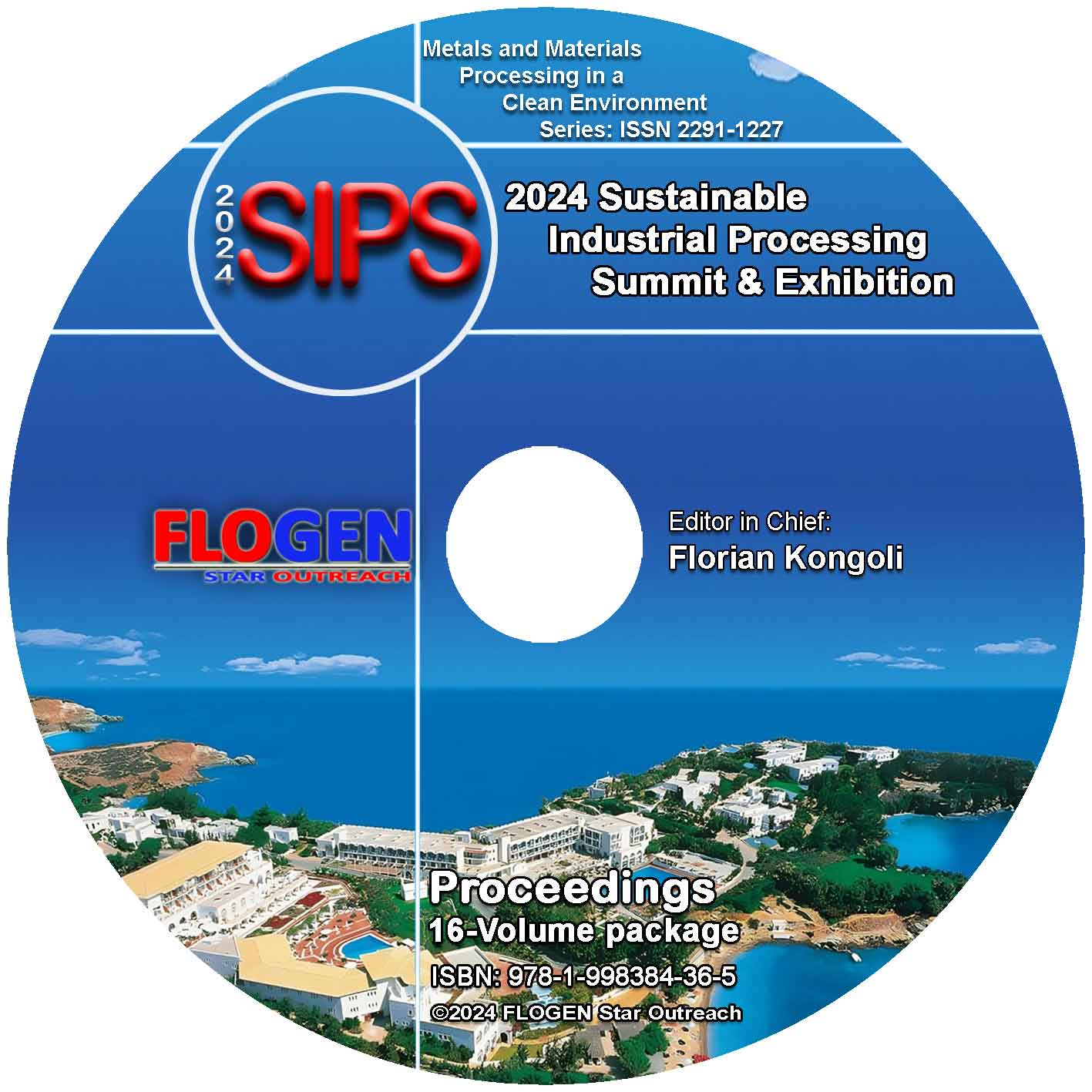2024 - Sustainable Industrial Processing Summit
SIPS 2024 Volume 14. Intl. Symp on Advanced Materials, Manufacturing, Magnesium and Aluminum
| Editors: | F. Kongoli, F. Marquis, N. Chikhradze, T. Prikhna, E. Suhir, Y. Yang |
| Publisher: | Flogen Star OUTREACH |
| Publication date: | 23 December 2024 |
| Pages: | 258 pages |
| ISBN: | 978-1-998384-30-3 (CD) |
| ISSN: | 2291-1227 (Metals and Materials Processing in a Clean Environment Series) |

CD shopping page
PROCESSING OF NI-TI ALLOYS THROUGH POWDER METALLURGY AND THEIR MECHANICAL AND MICROSTRUCTURAL BEHAVIOR
Vinicius Camilo Caitano1;1FIMAT-OURO PRETO, Ouro Branco, Brazil;
Type of Paper: Regular
Id Paper: 404
Topic: 43
Abstract:
The Nickel-Titanium (NiTi) alloy belongs to the group of smart materials, standing out for its excellent shape memory properties, superelasticity, damping, and biocompatibility. This alloy is used in both technological fields and, more importantly, in medical and dental areas. The use of powder metallurgy processes in the production of titanium alloy products is justified by its economic advantages, such as high raw material utilization, low energy transformation compared to fusion processes, excellent dimensional tolerance, allowing for various combinations and control of chemical elements (alloys). Therefore, powder metallurgy becomes an interesting process in the development of new materials, with a tendency to reduce the manufacturing costs of Ni-Ti alloys, achieving mechanical properties similar to human bone.This study proposes a microstructural analysis and an examination of the physical and mechanical properties of the NiTi alloy processed via powder metallurgy, combining temperature and time to produce a material suitable for biocompatibility feasibility testing in the human body.The alloy sintering was conducted over 24, 36, and 48 hours at a temperature of 932°C without the presence of the liquid phase. This study includes characterization techniques for mechanical properties using Vickers microhardness, and metallographic analysis using Optical Microscopy (OM) and Scanning Electron Microscopy (SEM).It was observed that with increased sintering time: porosity decreased, resulting in volumetric shrinkage and increased density. Thus, sintering for 36 hours proved to be the most ideal, potentially resulting in an alloy with the best shape memory effect properties.